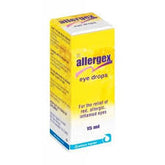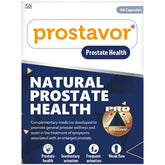Myositis (polymyositis and dermatomyositis)
Myositis refers to a group of inflammatory muscle diseases, including polymyositis and dermatomyositis, that cause muscle weakness, inflammation, and other systemic symptoms. These conditions are considered autoimmune diseases, where the immune system mistakenly attacks healthy muscle tissue.
Polymyositis
Key Features
- Inflammatory Muscle Disease: Characterized by chronic muscle inflammation leading to muscle weakness.
- Symmetric Weakness: Typically affects muscles on both sides of the body, particularly the proximal muscles (those closer to the trunk).
Symptoms
- Muscle Weakness: Gradual onset of weakness in the shoulders, hips, thighs, and neck. Difficulty climbing stairs, lifting objects, or rising from a seated position.
- Fatigue: Generalized tiredness and fatigue.
- Difficulty Swallowing (Dysphagia): Involvement of throat muscles can cause swallowing difficulties.
- Breathing Problems: If respiratory muscles are affected.
Dermatomyositis
Key Features
- Inflammatory Muscle Disease with Skin Involvement: In addition to muscle inflammation, dermatomyositis causes characteristic skin rashes.
- Skin Rash: Can precede or accompany muscle weakness.
Symptoms
- Muscle Weakness: Similar to polymyositis, with symmetrical weakness of the proximal muscles.
-
Skin Rash:
- Heliotrope Rash: Violet or dusky rash around the eyes.
- Gottron's Papules: Raised, scaly bumps over the knuckles, elbows, and knees.
- Shawl Sign: Rash on the shoulders, upper back, and neck.
- V-sign: Rash in a V-shape over the chest.
- Calcinosis: Calcium deposits under the skin, more common in children with dermatomyositis.
Diagnosis
Diagnosis involves a combination of clinical evaluation, laboratory tests, imaging studies, and sometimes biopsy:
- Medical History and Physical Examination: Assessment of muscle weakness, skin changes, and overall health.
-
Blood Tests:
- Creatine Kinase (CK): Elevated levels indicate muscle damage.
- Aldolase, Lactate Dehydrogenase (LDH), and Transaminases: Other muscle enzymes that may be elevated.
- Autoantibodies: Presence of specific autoantibodies (e.g., anti-Jo-1, anti-Mi-2) can help confirm the diagnosis.
- Electromyography (EMG): Measures electrical activity in muscles and can show abnormalities consistent with myositis.
- Muscle Biopsy: Histological examination of muscle tissue to confirm inflammation and other characteristic changes.
- Magnetic Resonance Imaging (MRI): Can detect muscle inflammation and guide biopsy.
Treatment
Treatment for myositis aims to reduce inflammation, improve muscle strength, and manage symptoms. Options include:
-
Medications:
- Corticosteroids: Prednisone is often the first-line treatment to reduce inflammation.
- Immunosuppressants: Methotrexate, azathioprine, mycophenolate mofetil, and cyclosporine are used to reduce immune system activity.
- Biologic Agents: Rituximab or intravenous immunoglobulin (IVIG) may be used for refractory cases.
-
Physical Therapy: Exercise programs tailored to the patient's ability to help maintain and improve muscle strength and function.
-
Speech and Swallowing Therapy: For those with dysphagia, specialized therapies can help improve swallowing function.
-
Sun Protection: For dermatomyositis patients, protecting the skin from sun exposure is crucial due to the photosensitive rash.
Prognosis
The prognosis for myositis varies widely depending on the severity of the disease, response to treatment, and presence of any associated complications. With appropriate treatment, many patients can manage symptoms effectively and maintain a good quality of life. However, some patients may experience chronic symptoms or relapses, and severe cases can lead to significant disability.
Complications
- Interstitial Lung Disease (ILD): A serious complication, particularly associated with anti-Jo-1 antibodies.
- Cardiovascular Issues: Including myocarditis and arrhythmias.
- Malignancy: Increased risk of certain cancers, especially in dermatomyositis.
Conclusion
Polymyositis and dermatomyositis are inflammatory muscle diseases characterized by muscle weakness and, in the case of dermatomyositis, distinctive skin rashes. Diagnosis involves clinical evaluation, laboratory tests, imaging, and biopsy. Treatment focuses on reducing inflammation and improving muscle strength with medications, physical therapy, and other supportive measures. Early diagnosis and appropriate management are crucial for improving outcomes and quality of life. If you suspect myositis, consult a healthcare provider for a thorough evaluation and personalized treatment plan
- Complication of Myositis (polymyositis and dermatomyositis)
- Diagnosis of Myositis (polymyositis and dermatomyositis)
- How is Myositis (polymyositis and dermatomyositis) treated?
- Medicine for Myositis (polymyositis and dermatomyositis)
- Myositis (polymyositis and dermatomyositis)
- Myositis (polymyositis and dermatomyositis) myths
- Remedies for Myositis (polymyositis and dermatomyositis)
- Support for Myositis (polymyositis and dermatomyositis)
- Symptoms associated with Myositis (polymyositis and dermatomyositis)
- The best British Online Pharmacy
- Top 10 UK Pharmacies
- Treatment for Myositis (polymyositis and dermatomyositis)
- What causes Myositis (polymyositis and dermatomyositis)
- What is Myositis (polymyositis and dermatomyositis)
- Where can I buy medicine for Myositis (polymyositis and dermatomyositis) in the UK
- ZimSeller Pharmacy



















